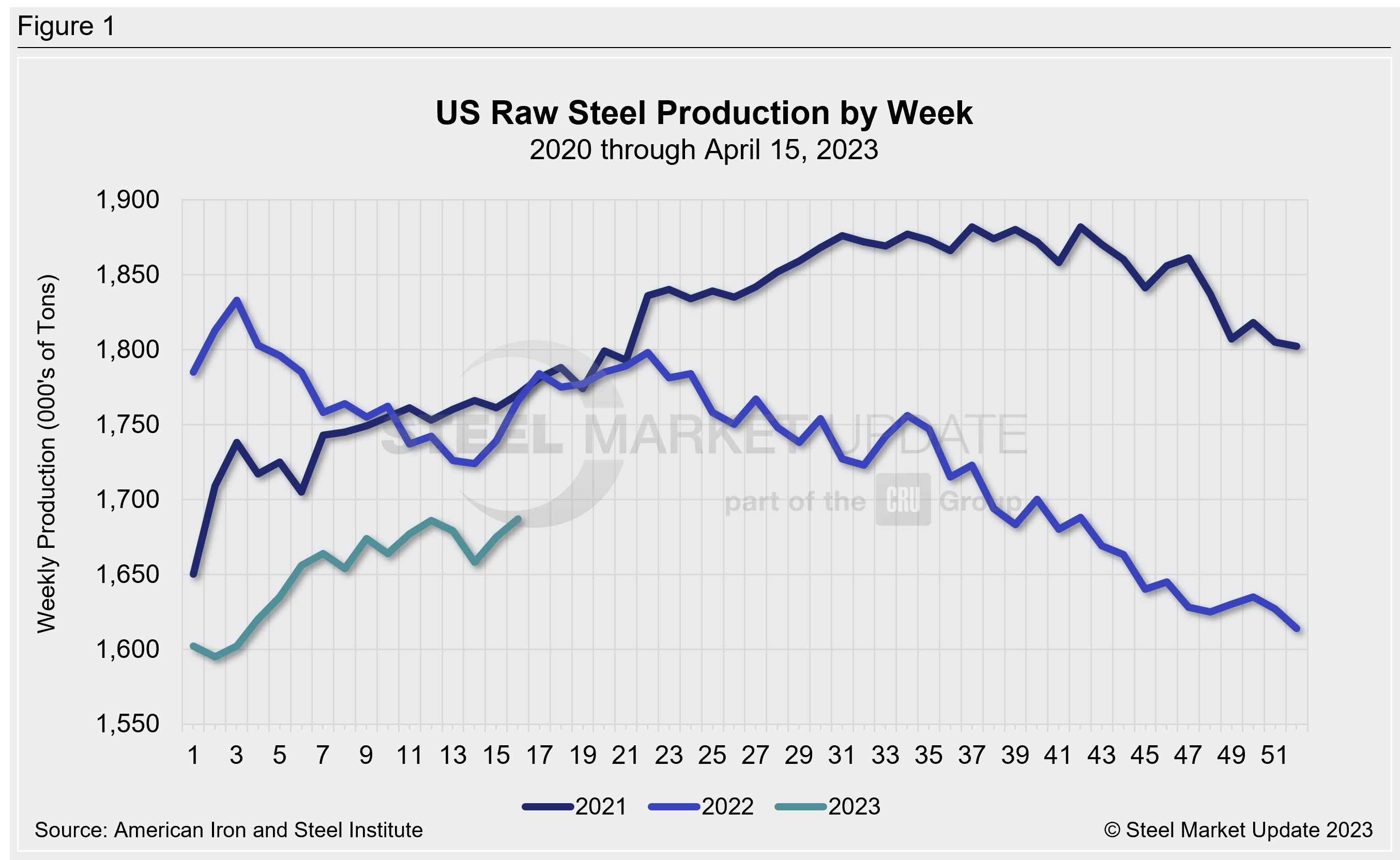Economy
Raw Steel Production Edges Higher: AISI
Written by David Schollaert
April 17, 2023
Raw steel production by US mills rose slightly last week, up 0.7% from the week prior and moving higher for the second straight week, according to data released by the American Iron and Steel Institute (AISI) on Monday, April 17.
Domestic production stood at 1,687,000 net tons in the week ended April 15 vs. 1,675,000 tons the previous week. Output was off 5.6% from 1,788,000 tons in the same week last year.
The mill capability utilization rate was 75% last week, up from 74.4% a week earlier and down markedly from 81.9% in the same week last year.
AISI said that adjusted year-to-date production through April 15 was 24,970,000 tons at a capability utilization rate of 74.4%. This is down 4.4% from the year-ago period when 26,111,000 tons were produced with an overall capability utilization rate of 80.3%.
Production by region for the week ending April 15 is below. (Note: week-over-week change is in parentheses.)
- Northeast – 149,000 tons (down 1,000 tons)
- Great Lakes – 577,000 tons (up 3,000 tons)
- Midwest – 211,000 tons (up 5,000 tons)
- South – 692,000 tons (up 15,000 tons)
- West – 58,000 tons (down 10,000 tons)

Note: The raw steel production tonnage provided in this report is estimated. The figures are compiled from weekly production tonnages provided by approximately 50% of the domestic production capacity combined with the most recent monthly production data for the remainder. Therefore, this report should be used primarily to assess production trends. The AISI production report “AIS 7,” published monthly and available by subscription, provides a more detailed summary of steel production based on data supplied by companies representing 75% of US production capacity.
By David Schollaert, david@steelmarketupdate.com

David Schollaert
Read more from David SchollaertLatest in Economy

Architecture billings continue to slide in March
Architecture firms said billings continued to decline in March, according to the latest Architecture Billings Index (ABI) released by the American Institute of Architects (AIA) and Deltek.

Beige Book shows concerns about trade policy
Manufacturing was mixed, but two-thirds of districts said activity was little changed or had declined.

New York state manufacturing index drops again in April
Firms were pessimistic, with the future general business conditions index falling to its second lowest reading in the more than 20-year history of the survey

Construction adds 13,000 jobs in March
The construction sector added 13,000 jobs, seasonally adjusted, in March, but tariffs could undermine the industry.

Supply chains, end-users brace for impact from tariffs
Supply chains are working through what the tariffs mean for them
